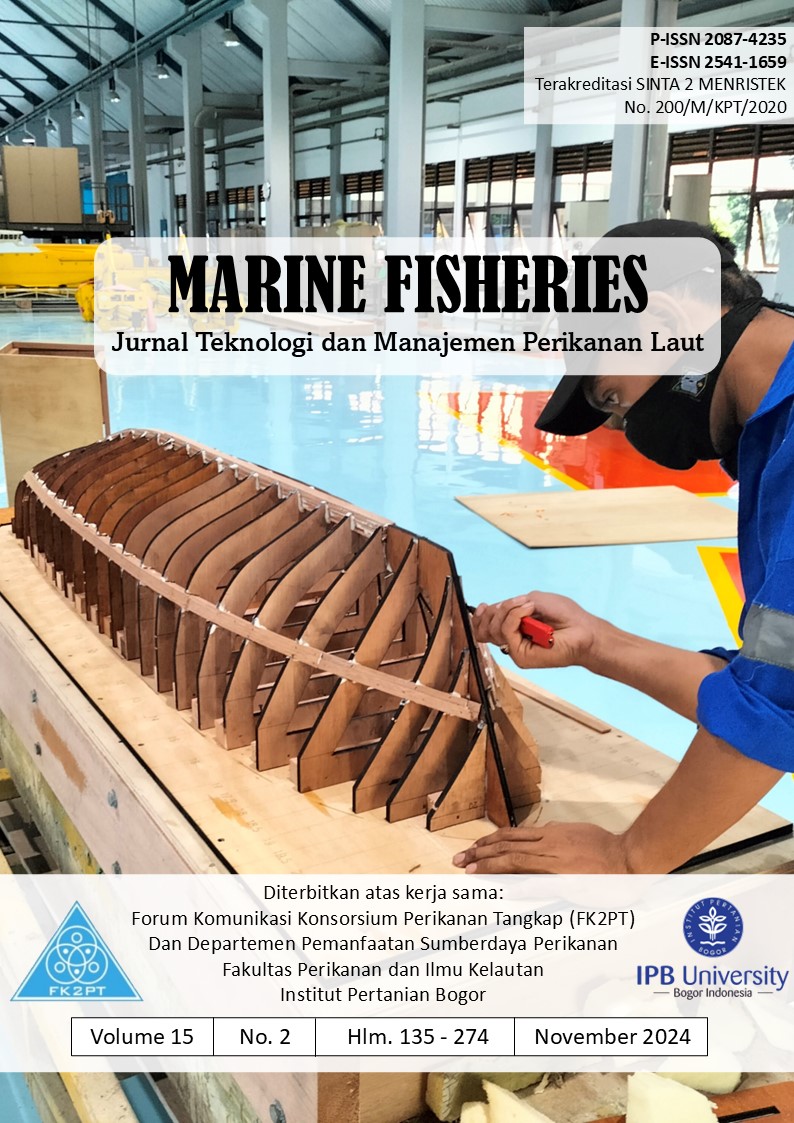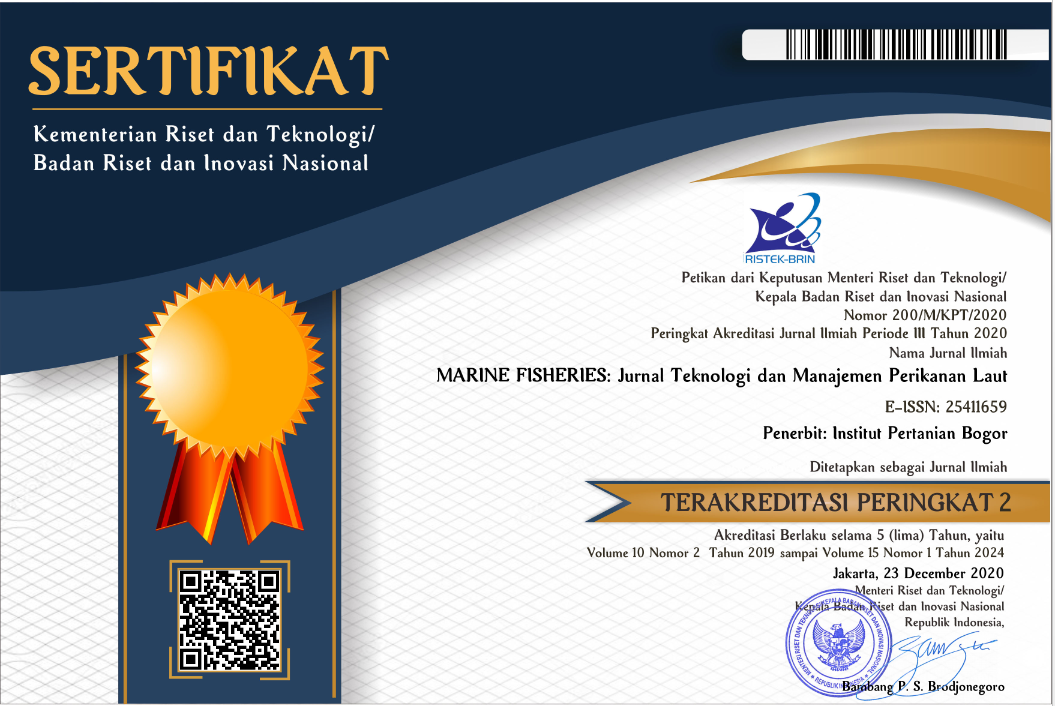BIOECONOMIC ANALYSIS OF RED SNAPPER (Lutjanus sp.) RESOURCES AT REMBANG REGENCY
Abstract
Rembang Regency has quite large fishery potential in 2021, reaching 87,292.9 tonnes in Central Java. One of the catches with high economic value is red snapper (Lutjanus sp.). Red Snapper is a demersal fish obtained from the operation of Danish seine. The purpose of this study was to analyze the condition of red snapper resources in Rembang Regency using the bioeconomic approach of the Gordon-Schaefer model and to analyze the level of utilization and exploitation of red snapper (Lutjanus sp.) in Rembang Regency. The research used a descriptive method with a purposive sampling method to collect a sample of 90 respondents who owned Danish Seine gear at Tasikagung Fishing Port. The results of data processing obtained Maximum Sustainable Yield (MSY) with a CMSY value of 2,002 tons/year, EMSY of 8,857 trips/year. The Maximum Economic Yield (MEY) calculation obtained a CMEY value of 1,936 tons/year, EMEY of 7,241 trips/year, and optimal profit of IDR 74,773,571,716 and the calculation of the Open Access Equilibrium (OAE) where a COAE value of 1,194 tonnes/year is obtained, an EOAE of 14,483 trips/year. The permissible utilization rate of red snapper (Lutjanus sp.) in Rembang Regency is 3,670,532 kg/year. In the last 9 years, an average resource utilization rate of 45% was obtained and an average effort level of 158%. This level of effort has exceeded the fishing limit, so it is necessary to reduce or limit fishing efforts.
Keywords: MSY; MEY; Rembang Regency; Red Snapper; Gordon Schaefer
Downloads
Copyright (c) 2024 Meri Handayani, Aristi Dian Purnama Fitri, Dian Wijayanto

This work is licensed under a Creative Commons Attribution-NonCommercial 4.0 International License.
Author(s) who published in this journal agree to following terms:
- Author(s) must understand and agree that the copyright script in published owned by the Marine Fisheries Journal. The copyright includes reproducing and selling the manuscript to all parties.
- Everyone can cite every manuscript published in Marine Fisheries for educational purposes, with the author's name and the Marine Fisheries Journal on reference.









